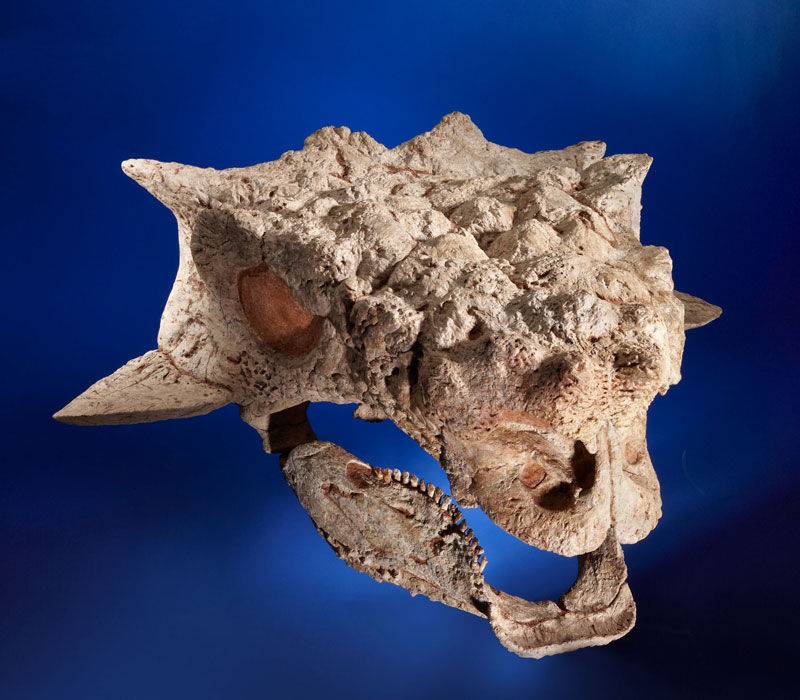More Dinosaur-Smuggling Cases May Follow on Tyrannosaur's Heels

Mongolia's claim to a tyrannosaur skeleton that experts agree was smuggled out of the country has captured international attention. However, this dinosaur's situation does not appear unique.
Other fossils from the same species of Mongolian dinosaur, as well as other specimens linked to that fossil-rich country, are not difficult to find in auction house catalogs or on eBay.
They may not be for long: According to Robert Painter, the Houston-based attorney representing the Mongolian president in the tyrannosaur case, the Mongolian government is putting plans in place to monitor sales like the $1.1 million purchase in May of the tyrannosaur at auction, in the hope of intercepting material taken illegally from within its borders.
Not the only one
The dinosaur skeleton, which Heritage Auctions put up for bid May 20 in New York, is a type of tyrannosaur called Tarbosaurus bataar. Its remains are plentiful in the Nemegt Formation within Mongolia's share of the Gobi Desert, where the only clearly identifiable Tarbosaurus fossils have been found. [Up For Auction: A Natural History Gallery]
Mongolian law in place since 1924 declares vertebrate fossils excavated within its borders to be state property and makes smuggling valuable artifacts, including fossils, a crime.
In the same auction, Heritage offered Tarbosaurus teeth and the skull of an armored dinosaur, called an ankylosaurid, which paleontologists said are also likely from Mongolia.
Sign up for the Live Science daily newsletter now
Get the world’s most fascinating discoveries delivered straight to your inbox.
Mongolia's president, Elbegdorj Tsakhia, recently enlisted the U.S. Attorney's Office in his fight to have the skeleton returned to his country. No other items have been drawn into the court case.
Easy to find
A cursory scan of recent catalogs from auction houses with a presence in the U.S. revealed that these sorts of offerings are not unusual. The auction house I.M. Chait offered the skull of a Tarbosaurus, also known as Tyrannosaurus bataar, for sale March 24, 2011, and a Tarbosaurus leg this past May 6. Skinner Auctioneers & Appraisers in Los Angeles offered two dinosaur eggs from Mongolia's Gobi Desert on June 2. Bonhams offered a Tarbosaurus skull on May 17, 2011, and, later in the year on Dec. 11, offered a frilled Protoceratops skeleton found in the Djadokhta Formation, which is located primarily in Mongolia. (The remainder of the formation is in China, which also forbids the export of fossils.)
LiveScience attempted to contact these auctions houses. The only reply came from a representative of Skinner. "I can tell you that Skinner consignors are contractually obliged to state that they have free and clear title to the material they consign with us," Skinner's marketing director Kate de Bethune wrote in an email.
Asked for comment on the Tarbosaurus teeth and the ankylosaurid skull, Heritage Auctions’ co-chairman Jim Halperin released a statement, saying: "Numerous unsupported allegations regarding these fossils have been reported in the news media … all of which Heritage Auctions hopes will soon be clarified."
As for the Tarbosaurus skeleton, Heritage Auctions has defended Eric Prokopi, the Florida fossil dealer who sought to sell it through the auction house, and cooperated with the Mongolian investigation into the origin of the dinosaur. Prokopi has questioned whether the fossils truly came from Mongolia. "Other than [from] the diggers, there is no way for anyone to know for certain when or where the specimen was collected,"Prokopi said in a statement. [Image Gallery: Dinosaur Fossils]
Auction houses aren't alone. A search for "dinosaur fossils mongolia" on eBay Wednesday (June 27) yielded about 20 results, most of them claws.
Not a shock
While it's impossible to be 100 percent certain the Tarbosaurus fossils sprinkled around public auctions and eBay are from Mongolia, "we can be reasonably certain," said Mark Norell, a paleontologist with the American Museum of Natural History in New York who worked in Mongolia in 1990.
"I see it all the time, so it is not anything terribly shocking that some place would have Mongolia fossils for sale," Norell told LiveScience. While other specimens have not provoked attention from the Mongolian government, the nearly complete Tarbosaurus skeleton was too big to pass by unnoticed, he said.
Paleontologists note that China and other countries have laws similar to Mongolia's that prohibit the export of fossils. However, fossils of Chinese origin are also easily found in the pages of auction catalogs and on eBay.
A watershed case?
The removal of fossils has been a problem for Mongolia during the last 15 to 20 years, amid the "chaos, poverty and corruption" during the country's transition from communism and a planned economy to democracy and a market economy, according to Puntsag Tsagaan, senior adviser to the Mongolian president.
"But now Mongolia has successfully overcome the transition, and it is one of the most fastest growing economies and maturing democracies in this part of the world," Tsagaan told LiveScience.
This loss of dinosaur fossils is likely to be a national priority in the wake of the parliamentary election that took place Thursday (June 28), Tsagaan said by email.
Work to that effect has already begun, according to Robert Painter, the Houston-based attorney representing Elbegdorj in the tyrannosaur case.
Elbegdorj has put together a working group to monitor auctions by well-known auction houses and eBay sales in the United States and elsewhere, Painter told LiveScience in an email.
"We hope that vigorous enforcement will help close this global marketplace for illicit fossils smuggled out of Mongolia," Painter wrote.
Follow Wynne Parry on Twitter @Wynne_Parry or LiveScience @livescience. We're also on Facebook & Google+.










